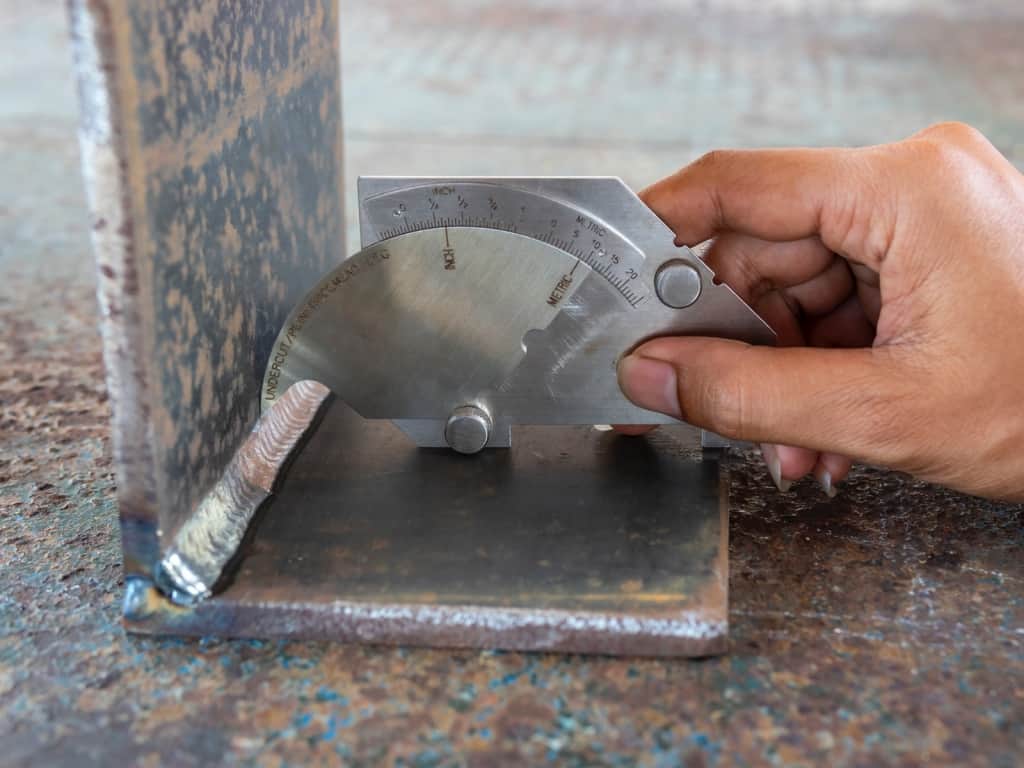Preventing Weld Undercut: Proven Methods Every Welder Ought To Know
Preventing Weld Undercut: Proven Methods Every Welder Ought To Know
Blog Article
A Comprehensive Guide to Identifying, Stopping, and Dealing With Undercut Welding Problems in Your Welding Projects
In the realm of welding, coming across undercut concerns is a typical obstacle that can endanger the structural integrity and overall high quality of your welding projects. Remain tuned as we check out the crucial parts of determining, avoiding, and fixing undercut welding issues, giving you with valuable insights and techniques to elevate your welding skills to the following level.
Typical Reasons For Undercut Welding
Undercut welding, an usual problem in welding processes, can be triggered by numerous factors that need to be carefully identified and addressed to guarantee the stability of the weld joint. Among the key root causes of undercut welding is excessive warmth input. When the welding specifications, such as voltage, current, or take a trip rate, are not effectively established, a too much quantity of warm can be produced. This excess warmth causes the melting and subsequent removal of the base product along the edges of the weld joint, developing a groove referred to as undercut.
One more typical reason of undercut welding is improper welding strategy. Recognizing these root triggers and carrying out rehabilitative measures is vital in preventing and remedying undercut welding troubles in welding projects.
Identifying Undercut in Welds

To determine undercut precisely, proper illumination and magnifying tools are necessary to inspect the weld joint completely. Utilizing devices such as a welding scale or a magnifying glass can help in identifying also the tiniest undercut imperfections. In addition, running a finger or a finger nail along the weld joint can occasionally disclose undercut, as the surface may feel unequal or have a dip where the undercut exists.
Preventive Steps for Undercut
Having a deep understanding of the causes of undercut in welds allows for the execution of effective preventive actions to preserve weld quality and integrity. These setups must be optimized to protect against excessive warmth input, which can lead to undercut development.

Techniques for Fixing Undercut

To resolve undercut problems successfully, welders can employ details methods targeted at remedying the problem and recovering the stability of the weld joint. One technique is to change the welding parameters, such as the voltage, current, and take a trip speed, to ensure proper heat input and blend. Enhancing the welding existing or minimizing the traveling speed can aid complete the undercut. In addition, altering the welding strategy from a press to a drag or the other way around can likewise aid reduce undercut.
One more technique is to utilize a weaving motion while welding to make sure appropriate sidewall blend and fill in the undercut. By oscillating the welding arc from side to side within the weld joint, the welder can transfer extra filler product into the undercut locations, efficiently removing the defect.
Additionally, grinding out the undercut and rewelding the joint can be a sensible solution for much more extreme undercut problems - Preventing weld undercut. This procedure involves eliminating the undercut area, preparing the base steel, and after that rewelding the joint with proper welding specifications and methods to stop undercut from repeating

Expert Tips for Avoiding Undercut
Utilizing correct welding methods and preserving control over essential welding specifications are important strategies for welders intending to stop undercut in their weld joints. One professional suggestion for preventing undercut is to make sure appropriate joint preparation. This entails cleansing the base steel thoroughly to get rid of any kind of pollutants that could bring about damage formation. Additionally, picking the proper welding process and filler metal for the specific application can aid stop undercut. Welders ought to also pay close attention to the welding current and voltage setups, ensuring they are within the advised variety to avoid getting too hot and prospective undercut. Preserving a regular traveling speed throughout the welding process is an additional essential tip to avoid undercut. By relocating at a constant speed, welders can guarantee correct fusion and minimize the probability of undercut formation. Checking the weld bead after conclusion can assist identify any kind of signs of undercut early on, enabling for immediate these details restorative action to be taken.
Verdict
Finally, determining, protecting against, and dealing with undercut welding problems in your why not check here welding jobs is important for making sure durable and solid welds. Preventing weld undercut. By comprehending the common sources of undercut, being able to determine it in welds, carrying out safety nets, and using appropriate methods for fixing undercut, you can prevent prospective problems and create top notch welds. Adhering to professional suggestions for staying clear of undercut can help you boost your welding skills and generate much better cause your tasks
Undercut welding, a typical problem in welding procedures, can be triggered by numerous variables that require to be very carefully identified and addressed to guarantee the stability of the weld joint. In addition, running a finger or a finger nail along the weld joint can often disclose undercut, as the surface area might really feel unequal or have a dip where the undercut exists.
Making use of correct welding strategies and preserving control over key welding parameters are vital approaches for welders intending to prevent undercut in their weld joints.In conclusion, determining, stopping, and repairing undercut welding troubles in your welding projects is crucial for ensuring strong and long lasting welds. By recognizing the common reasons of undercut, being able to identify it in welds, carrying out preventive steps, and utilizing proper techniques for fixing undercut, you can avoid possible issues and produce top notch welds.
Report this page